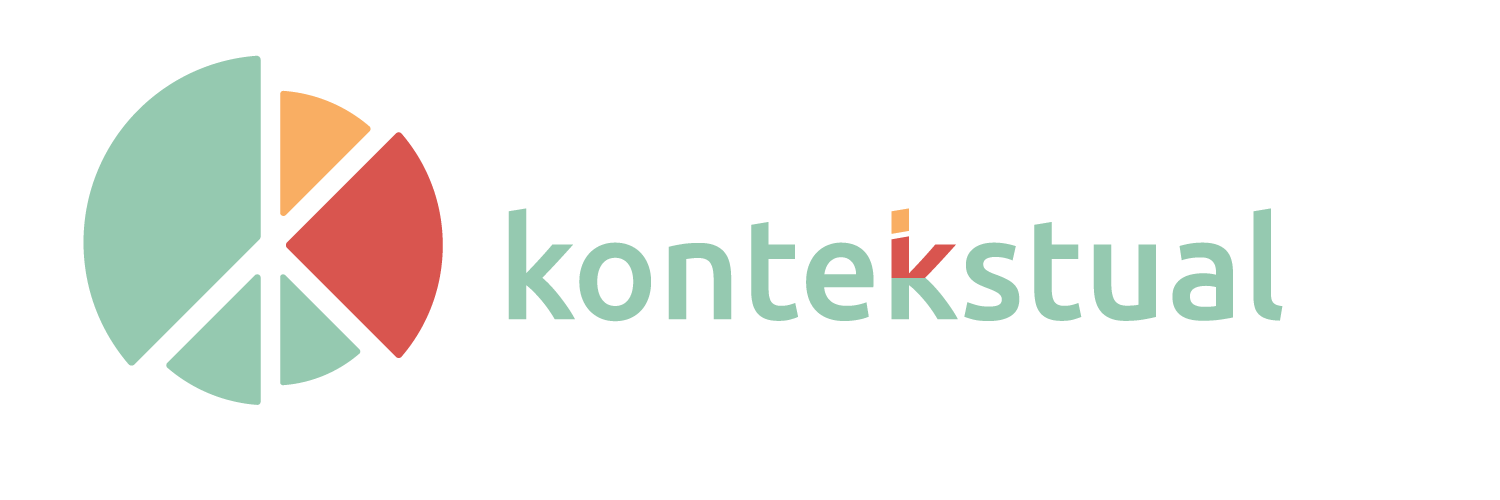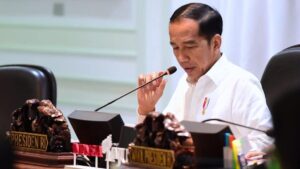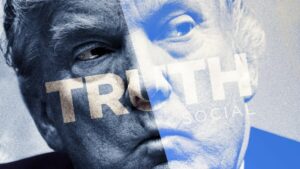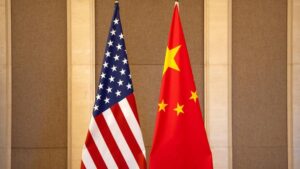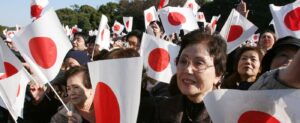Too Far, yet “Unstoppable”: The Story of Ultranationalism in Ukraine
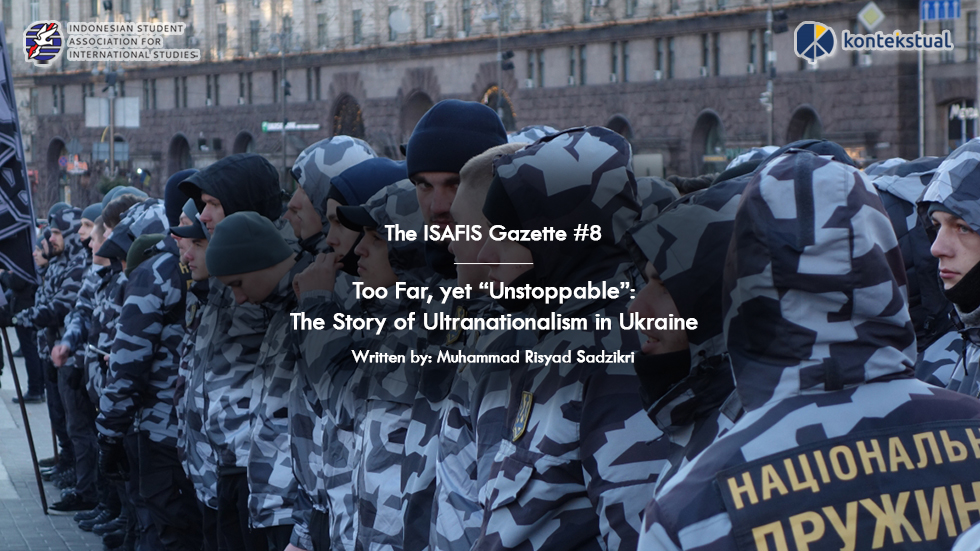
Illustration from ISAFIS
This article is originally published on ISAFIS’ Medium. Click here to be redirected.
In the last seven years, Ukraine’s image as a sovereign nation has changed drastically. It has risen from its old status as an autocratic Russian puppet state to a pro-EU democratic country. However, one must admit that at the same time, democratisation comes with a cost. In this case, it is the rise of the far-right, Neo-Nazism, and ultranationalism throughout Ukraine.
Since the Euromaidan protest toppled the pro-Russian Viktor Yanukovich government in 2013-2014, many ultranationalist organisations founded or gained notoriety in Ukrainian politics. For example, the Svoboda Party is known for its radical stance in the parliament of Ukraine (the Verkhovna Rada) even before the Euromaidan incident. The Right Sector (Pravyi Sektor) is also known for fighting the riot police and amassing assault weapons in the protest.
Although the far-right coalition under the Svoboda Party only achieved 2.15 per cent of votes in the 2019 Ukraine Parliamentary Election, the ultranationalist already has a place in the politics of Ukraine, especially when it comes to street politics and violence. Ultranationalist organisations and militias often attack human rights activists, LGBTQ+, or even Jews and Romani people in the street. The tragedy has occurred repeatedly that such violence is deemed a usual routine in Ukrainian cities, damaging the image of Ukraine in the international community. Worse, the police act passively towards the ultranationalist violence and usually prefer to stop the counter-protest against the ultranationalist.
All these ultranationalist surges raise several interesting questions: Why did it all happen? Where did it all start? More importantly, why can’t the police stop it, or worse, do they even want to put a stop to it?
There are many reasons why the ultranationalist movement skyrocketed in Ukraine. It ranges from political concerns to economic problems that have plagued the nation since its independence in 1991. However, one reason has become blindingly apparent: Ukraine is enjoying its identity renaissance.
Historically, the Ukrainians are a group of people that has suffered many forms of subjugation and attempts to eliminate their culture. For more than 700 years, Ukraine was ruled by foreign powers and cultures, such as Mongols, Poland-Lithuanian, Austria-Hungary, and, most importantly, Russia. The Russian Empire and the Russian-dominated Soviet Union were notoriously known for their attempt to restrict, or even eliminate, the Ukrainian cultures and enforce the Russification policy. The revival of Ukrainian identity in post-1991 independent Ukraine was also often stalled by pro-Russian sentiment in the Southern and Eastern Ukraine, as well as Russia’s adamant pressure on the country. Consequently, the Ukrainians have not been able to fully express their identity as “Ukrainian” for more than seven centuries, even after independence.
The situation radically changed when the people, fueled by anger over the cancellation of the Ukraine-EU agreement by pro-Russian Viktor Yanukovich’s presidency, rebelled toward the government in the Euromaidan protest. During the said event, the Ukrainians finally discovered a way to express themselves as “Ukrainian” through rebelling against the government supported by a foreign power. The nationalist sentiment increased much further when Russian controversially annexed the Crimean Peninsula and supported the pro-Russian Donetsk and Luhansk people who were going against the central government of Ukraine. In the end, Ukrainians finally gained their identity again as “Ukrainian” who tried to protect their sovereignty against foreign threats.
Unfortunately, the revival of Ukrainian identity came with a rising neo-Nazi style of ultranationalism. To represent nationalist sentiment and Ukrainian identity, many organisations chose to make WWII-era fascist and Nazi collaborator organisations such as OUN-B. These movements also bestowed questionable figures as their role model for Ukrainian nationalism, fosuch aspan Bandera. The ultranationalist organisations also use Nazi symbolism to represent their identity, such as the Wolfsangel logo that is now claimed as the manifestation of Ukraine’s “National Idea.” All of the Nazi resemblances create massive consequences on Ukrainian ultranationalists’ way of thinking: they believed that they are destined to “cleanse” the Ukrainian people from many groups they perceived as an “impure” or threat to national security sovereignty by any means, including violence.
The result of the Neo-Nazi attitude is staggering. In 2018, an ultranationalist group attacked a Romani camp in Western Ukraine, leaving one dead by stabbing and four injured. Another ultranationalist group also attacked many participants in the routine International Women Day on March 8th in the same year. Back in 2017, Israel also reported that anti-Semitism incidents in Ukraine had doubled, surpassing the tally for all anti-Semitic incidents reported throughout Eastern Europe and former Soviet Union territories.
The nationalist sentiment has gone too far in Ukraine. It has changed from expressing one’s identity revival into a tool for racist and xenophobic remarks. It also has tarnished Ukraine’s face in the international community, credited to their blatant violent engagement with human rights activists. But why do such publicly radical and anti-democratic movements easily roam the streets of post-Euromaidan Ukraine, where, ironically, democratisation is in its full throttle? Why does it seem impossible to stop this radical yet small movement?
One of the reasons why the Ukrainian ultranationalist movements operate almost freely throughout Ukraine has been credited to its merit as a group that decisively toppled the Yanukovich government by organising direct action and violence towards the regime’s riot police. They are also one of the forerunners of Ukrainian defence against pro-Russian separatists in Donetsk and Luhansk. Their actions create an image that the ultranationalist movement is one of the “guarantors” of Ukraine’s sovereignty, thus making them a war hero in the eyes of many Ukrainians.
All of the status and merit gained in the times of revolution creates high regard from the significant segment of people and state apparatus. It gave these dangerous groups the privilege of receiving special positions in the Ukrainian post-Euromaidan government, such as given cabinet positions in Arseniy Yatsenyuk’s government. Ukraine’s law enforcement is also known for its pro-ultranationalist sentiment, thus making the ultranationalist movements feel safe to engage in the violent act toward their perceived “enemies.”
Sadly, the Government of Ukraine also plays an indirect role in growing many seeds of Neo-Nazi ultranationalism in the country. Under the pretext of “decommunisation” and the elimination of Soviet legacy in Ukraine, the government enshrined two Nazi collaborator groups—OUN and Ukrainian Insurgent Army (UPA)—as a hero to the Ukrainian people 2015. Many streets and statues have been renamed and erected to commemorate the ultranationalist and Nazi collaborator figure, Stepan Bandera. All of the government’s tacit support seems to create a sense of legitimacy for ultranationalist groups to justify their radical and extremist actions.
In the end, nationalism in Ukraine was quite a positive phenomenon at the beginning of Euromaidan, as it was a sign of their identity revival. Unfortunately, things started to get out of control when Ukrainian nationalist groups chose the Nazi idea and heritage as their role model and symbol of nationalism. It created a sense of legitimacy to do violence towards disadvantaged and marginalised people in Ukraine. It could easily be stopped, yet the pro-ultranationalist power structure in post-Euromaidan Ukraine makes it seem unstoppable. Basically, it is not because they cannot stop it. Instead, they choose not to stop it.
Although the movements seem to decline in the era of Volodymyr Zelensky’s centrist presidency, the damage has been done. It has left a scar on Ukraine’s democratisation process and its effort to be accepted in the European regional community. It also creates bitterness inside the Ukrainian society itself while Ukraine’s sovereignty is being challenged from the east. Most importantly, as long as Ukraine’s ultranationalist idea is still being enshrined, facilitated, and protected by the state apparatus and the power structure, the Jew, Romani, Women, LGBTQ+, and human rights activists living within Ukrainian territory still must live under the constant threat of violence towards them.
Bibliography
Cohen, Stephen F. “America’s Collusion with Neo-Nazis.” The Nation. Accessed 29 June 2021. https://www.thenation.com/article/archive/americas-collusion-with-neo-nazis/.
Golinkin, Lev. “Neo-Nazis and the Far Right Are on the March in Ukraine.” The Nation. Accessed 29 June 2021. https://www.thenation.com/article/archive/neo-nazis-far-right-ukraine/.
Gorbunova, Yulia. “Ukraine Police Break up Peaceful Protest Against Far-Right Violence.” Human Rights Watch. Accessed 29 June 2021. https://www.hrw.org/news/2021/01/22/ukraine-police-break-peaceful-protest-against-far-right-violence.
Hyde, Lily. “Ukraine to rewrite Soviet history with controversial ‘decommunisation’ laws.” The Guardian. Accessed 29 June 2021. https://www.theguardian.com/world/2015/apr/20/ukraine-decommunisation-law-soviet.
Likhachev, Vyacheslav. “Far-right Extremism as a Threat to Ukrainian Democracy.” Nations in Transit Brief (2018).
Melkozerova, Veronika. “Women’s March participants attacked in Ukraine.” Kyiv Post. Accessed 29 June 2021. https://www.kyivpost.com/ukraine-politics/womens-march-participants-attacked-ukraine.html.
Shuster, Simon. “Exclusive: Leader of Far-Right Ukrainian Militant Group Talks Revolution With TIME.” TIME, accessed 29 June 2021. https://time.com/4493/ukraine-dmitri-yarosh-kiev/.
Weir, Fred. “Militaristic and anti-democratic, Ukraine’s far-right bides its time.” The Christian Science Monitor. Accessed 29 June 2021. https://www.csmonitor.com/World/Europe/2019/0415/Militaristic-and-anti-democratic-Ukraine-s-far-right-bides-its-time.
“Ukraine profile – Timeline.” BBC News. Accessed 29 June 2021. https://www.bbc.com/news/world-europe-18010123.
“Ukraine’s revolution and the far right.” BBC News. Accessed 29 June 2021. https://www.bbc.com/news/world-europe-26468720.
“Ukraine Roma camp attack leaves one dead.” BBC News. Accessed 29 June 2021. https://www.bbc.com/news/world-europe-44593995.
“Комбат “Азова” заперечує зв’язок символіки батальйону з нацизмом.” RBK-Ukraina. Accessed 29 June 2021. https://www.rbc.ua/ukr/news/kombat-azova-otritsaet-svyaz-simvoliki-batalona-1434961363.html.
“Результаты внеочередных выборов народных депутатов Украины 2019,” Ukrainskaya Pravda. Accessed 29 June 2021. https://www.pravda.com.ua/rus/articles/2019/07/21/7221526/.
M. Risyad Sadzikri is an International Relations student at Universitas Indonesia. He has a keen interest in studying international politics, world history, traditional security studies, and Africa-Asia-Eastern Europe studies. He can be found on Instagram with the username @risyadsadzikri
